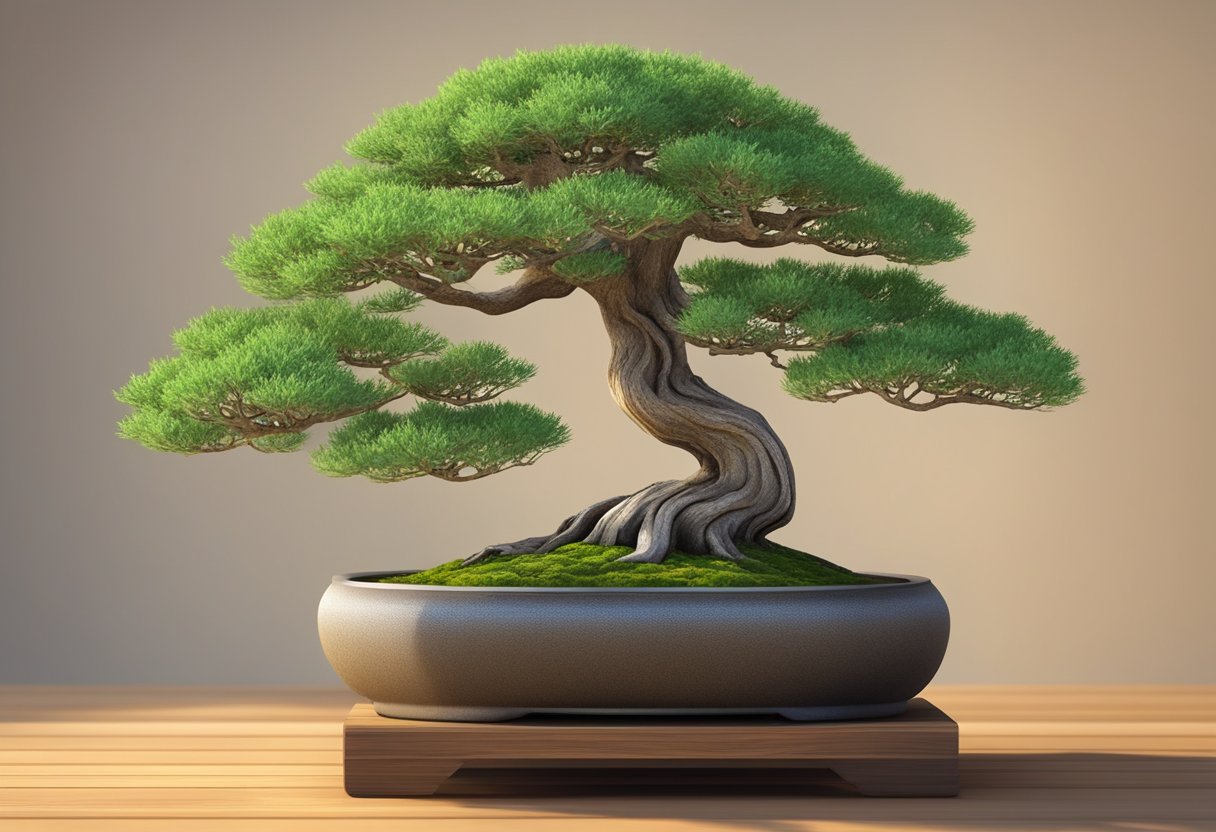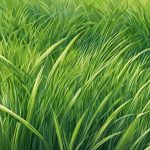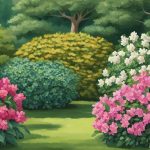Types Of Bonsai Trees
Bonsai trees are a popular and unique way to bring nature indoors. These miniature trees are grown and trained to replicate the shape and style of full-sized trees, but on a much smaller scale. They are often used for decoration, as well as for their meditative and calming properties.
Understanding the basics of bonsai is essential before choosing a type of tree to grow. Bonsai trees require specific care techniques and an appropriate environment to thrive. Some popular bonsai varieties include juniper, Japanese maple, and ficus. Each variety has its own unique features and requirements, making it important to choose the right one for your needs and abilities.
Key Takeaways
- Understanding the basics of bonsai is essential before choosing a type of tree to grow.
- Popular bonsai varieties include juniper, Japanese maple, and ficus.
- Bonsai trees require specific care techniques and an appropriate environment to thrive.
Understanding Bonsai Basics

Bonsai is a Japanese art form that involves cultivating miniature trees in small containers. It is a practice that has been around for centuries and has evolved over time to become a popular hobby worldwide. In this section, we will explore the history and culture of bonsai, as well as the various styles and forms that are commonly used.
History and Culture
The art of bonsai originated in China over a thousand years ago and was later adopted by the Japanese. It was initially practiced by the wealthy and elite, who used it as a way to display their wealth and status. Over time, the practice became more accessible to the general public, and bonsai began to be viewed as a form of art that could be appreciated by everyone.
Today, bonsai is a popular hobby around the world, and enthusiasts come from all walks of life. It is a practice that requires patience, dedication, and a deep understanding of nature and tree species.
Bonsai Styles and Forms
Bonsai trees can be styled in a variety of ways, each with its own unique characteristics and aesthetic. Some of the most popular styles include formal upright, informal upright, slanting, and cascading.
Formal upright bonsai trees are characterized by a straight trunk that tapers gradually towards the top. The branches are also arranged in a symmetrical pattern, giving the tree a balanced and formal appearance.
Informal upright bonsai trees, on the other hand, have a more natural and organic look. The trunk is still straight, but it may have a slight curve or bend. The branches are also arranged in a more random pattern, giving the tree a more relaxed and informal appearance.
Slanting bonsai trees are characterized by a trunk that leans to one side, creating a sense of movement and dynamism. The branches are also arranged in a way that complements the slant of the trunk, creating a sense of balance and harmony.
Cascading bonsai trees are characterized by a trunk that grows downwards, creating a waterfall-like effect. The branches are also arranged in a way that complements the cascading effect, creating a sense of movement and flow.
In conclusion, bonsai is an art form that requires a deep understanding of nature and tree species. It is a practice that has been around for centuries and has evolved over time to become a popular hobby worldwide. Understanding the history and culture of bonsai, as well as the various styles and forms that are commonly used, is essential for anyone interested in pursuing this fascinating and rewarding hobby.
Popular Bonsai Varieties
Bonsai trees come in different varieties, each with unique features that make them suitable for different environments and preferences. Here are some of the popular bonsai varieties:
Juniper Bonsai
Juniper is one of the most popular bonsai varieties. It is a genus of over 50 evergreen coniferous trees and shrubs that are popular as bonsai trees. All species of juniper can be successfully grown as bonsai. Junipers are popular as bonsai for two main reasons. First, they are very hardy and can withstand a wide range of temperatures and humidity levels. Second, they have a natural, graceful shape that is perfect for bonsai.
Ficus Bonsai
Ficus is another popular bonsai variety. It is a genus of about 850 species of woody trees, shrubs, vines, epiphytes, and hemiepiphytes in the family Moraceae. Ficus bonsai trees are popular because they are easy to care for, and they can thrive in a wide range of environments. They are also very versatile and can be trained into different shapes and styles.
Pine Bonsai
Pine is a popular bonsai variety that is native to many parts of the world. There are many different species of pine that can be used for bonsai, including Japanese black pine, Scots pine, and white pine. Pine bonsai trees are popular because they have a natural, rugged appearance that is well-suited for bonsai. They are also very hardy and can withstand a wide range of temperatures and humidity levels.
Deciduous Bonsai
Deciduous trees are another popular bonsai variety. They are trees that lose their leaves in the fall or in the dry season. Some popular deciduous bonsai trees include Japanese maple, oak, and azalea. Deciduous bonsai trees are popular because they have a natural, seasonal cycle that is well-suited for bonsai. They also have a unique beauty that is different from evergreen bonsai trees.
In addition to the aforementioned varieties, there are other popular bonsai trees such as the Chinese elm bonsai tree, ginseng ficus, and crassula. Each of these varieties has its unique features and requirements that make it suitable for different environments and preferences.
Bonsai Care Techniques
Growing a bonsai tree is not just about the art of shaping and styling a tree. It is also about the care and maintenance that is required to keep the tree healthy and thriving. Here are some bonsai care techniques that will help you keep your bonsai tree healthy and beautiful.
Watering and Feeding
Watering and feeding are two of the most important aspects of bonsai care. Bonsai trees require a consistent level of moisture in the soil to thrive. Overwatering or underwatering can lead to root rot or dehydration, which can be fatal to the tree. It is important to water the tree when the soil is dry to the touch, but not bone dry.
Bonsai trees also require regular feeding to ensure they have the nutrients they need to grow and remain healthy. Fertilizer should be applied during the growing season, which is typically from spring to fall. It is important to use a balanced fertilizer that contains all the necessary nutrients for the tree.
Pruning and Shaping
Pruning and shaping are essential techniques for maintaining the shape and size of a bonsai tree. Regular pruning helps to keep the tree’s shape and size in check, and also encourages new growth.
Shaping, on the other hand, involves the use of wire to bend and shape the branches and trunk of the tree. This technique requires skill and patience, as it can take several years to achieve the desired shape.
Repotting and Root Care
Repotting is necessary to ensure that the bonsai tree has enough room to grow and develop. It is recommended to repot the tree every two to three years, depending on the size of the pot and the growth rate of the tree.
Root care is also important for maintaining the health of the bonsai tree. Root pruning is necessary to prevent the roots from becoming too large and taking over the pot. It is important to prune the roots carefully, as cutting too much can damage the tree.
In conclusion, bonsai care techniques require knowledge, patience, and dedication. By following these techniques, bonsai growers can keep their trees healthy and beautiful for years to come.
Creating the Right Environment
Creating the right environment is crucial to the health and growth of your bonsai tree. In this section, we will discuss the key factors that you need to consider when creating the ideal environment for your bonsai tree.
Climate and Placement
Different species of bonsai trees have different temperature preferences, so it is important to research your specific tree’s needs before choosing its location. Generally, most bonsai trees prefer a moderate climate with temperatures ranging from 50 to 80 degrees Fahrenheit. Direct sunlight can be harmful to some species of bonsai trees, so it is important to place your tree in a location that receives the appropriate amount of sunlight. Wind can also be damaging to bonsai trees, so it is important to protect your tree from strong gusts of wind.
Dealing with Pests and Diseases
Bonsai trees can be susceptible to pests and diseases, so it is important to take steps to prevent and treat these issues. One way to prevent pests and diseases is to keep your bonsai tree in a clean environment. This includes regularly removing dead leaves and debris from the soil and pruning any dead or diseased branches. If you notice any signs of pests or diseases, such as yellowing leaves or small insects on the leaves, it is important to take action immediately. There are many natural and chemical treatments available to treat pests and diseases, so it is important to research the best treatment for your specific issue.
In summary, creating the right environment for your bonsai tree is crucial to its health and growth. By considering factors such as climate, placement, and pest prevention, you can ensure that your bonsai tree thrives for years to come.
Advanced Bonsai Concepts
Aesthetic Principles
Advanced bonsai concepts focus on the aesthetic principles of bonsai, including balance, proportion, harmony, and simplicity. These principles are essential to create a visually appealing bonsai tree that looks natural and harmonious.
Balance refers to the distribution of visual weight in a bonsai tree. A well-balanced bonsai tree has a harmonious distribution of foliage, branches, and roots. Proportion deals with the relationship between the different parts of a bonsai tree. The size of the trunk, branches, and foliage should be in proportion to each other.
Harmony is achieved when all the elements of a bonsai tree work together to create a cohesive and pleasing whole. Simplicity is the key to achieving harmony in a bonsai tree. A bonsai tree with too many branches or too much foliage can look cluttered and chaotic.
Bonsai in Arts and Exhibitions
Bonsai is not only a horticultural art form but also a cultural art form that has been practiced for centuries in Japan. Bonsai has gained worldwide popularity, and there are many bonsai exhibitions and competitions held every year.
In bonsai exhibitions, the trees are judged based on their aesthetic qualities, including the balance, proportion, harmony, and simplicity. Bonsai artists compete to create the most beautiful and natural-looking bonsai trees.
Japanese maple, Japanese black pine, Japanese white pine, Japanese elm, Acer palmatum, and Rhododendron are some of the most popular tree species used for bonsai. Each tree species has its unique characteristics that can be highlighted through careful pruning and shaping.
In conclusion, advanced bonsai concepts focus on the aesthetic principles of balance, proportion, harmony, and simplicity. Bonsai is not only a horticultural art form but also a cultural art form that has gained worldwide popularity. Japanese maple, Japanese black pine, Japanese white pine, Japanese elm, Acer palmatum, and Rhododendron are some of the most popular tree species used for bonsai.
Choosing Your Bonsai
Choosing the right bonsai tree is an important decision that requires careful consideration. There are many factors to keep in mind, such as the species of the tree, its size, and its growing conditions. Here are some tips to help you choose the perfect bonsai tree for your home or garden.
Consider the Species
There are many different species of bonsai trees, each with its own unique characteristics and requirements. Some popular species include juniper, ficus, pine, deciduous, and tropical trees. It’s important to choose a species that is well-suited to your climate and growing conditions. For example, if you live in a dry climate, you may want to choose a species that can tolerate drought, such as a juniper or a pine tree.
Think About Size
Bonsai trees come in a wide range of sizes, from tiny miniature trees to larger specimens that can reach several feet in height. When choosing a bonsai tree, it’s important to consider the size of the tree in relation to the space where it will be displayed. A large tree may look beautiful in a spacious garden, but it may be overwhelming in a small apartment.
Consider the Style
Bonsai trees can be trained into a variety of different styles, such as formal upright, informal upright, slanting, and cascading. Each style has its own unique look and requires different pruning and training techniques. When choosing a bonsai tree, consider the style that best suits your taste and the overall aesthetic of your home or garden.
Know Your Growing Conditions
Different bonsai species have different growing requirements, so it’s important to choose a tree that is well-suited to your growing conditions. Some species, such as the Chinese Elm and the Bald Cypress, are more forgiving and can tolerate a wider range of growing conditions. Others, such as the Juniper and the Pine, require more specific growing conditions and may be more challenging to care for.
In conclusion, choosing the right bonsai tree requires careful consideration of the species, size, style, and growing conditions. By taking the time to research and choose the perfect tree, you can enjoy the beauty and tranquility of a bonsai tree for years to come.






